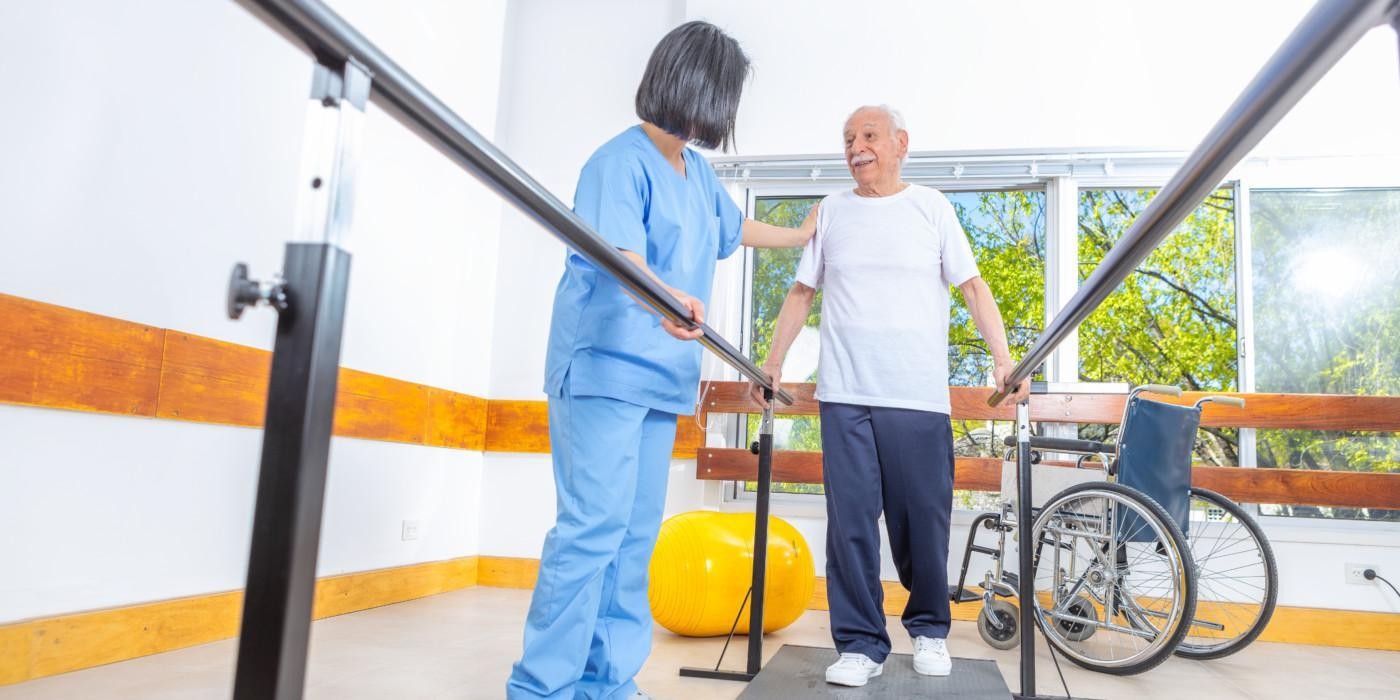Is Physical Therapy important to a person with dementia?
According to the Finnish Geriatric Intervention Study to Prevent Cognitive Impairment and Disability (FINGER[1]), it is possible to prevent cognitive decline using a multidomain intervention among older at-risk individuals. The study lists a number of interventions including diet, exercise, cognitive and social. In particular, the exercise intervention refers to individually tailored, progressive muscle strength training and aerobic exercise programs, including exercises to maintain and improve postural balance. Hence, the study shows that physical therapy is an important aspect of multi-prone therapy for a person more so with cognitive impairment.
[Please refer to the earlier three related blogs on:
Rehabilitation Therapies
In Hovi Care, we offer three different rehabilitation therapies, namely:
- Physical Therapy (PT) – treat clients’ injury and work to improve their ability to perform body movement.
- Occupational Therapy (OT) – help injured clients improve their ability to perform activities of daily living (ADLs) independently.
- Post-Rehabilitation Therapy (RT) – work on post-rehabilitation or maintain physical fitness of the clients.
In a nutshell, if the clients are injured due to accident, stroke, fall, etc, then they will probably need a PT for a start to work on the focused area of the muscles to ensure its functionality.
After a few weeks or months of PT work out, they can consider OT to help them perform independently in ADLs (such as walking, eating, bathing, combing, dressing, etc). OT also helps to prepare them to integrate back into their working life. Now, in most settings, PT and OT work together to address different needs.
Once they are stabilized, they can consider doing more post-rehabilitation (RT) exercises to strengthen their muscles. Most of our clients require OT or RT.
What is the different between PT and OT?
According to Massachusetts College[2], the most basic difference between physical therapy and occupational therapy is that a PT focuses on improving the patients’ ability to move their body whereas an OT focuses on improving their ability to perform activities of daily living. Additionally, PT’s foundation was in physical rehabilitation whereas OT was founded in mental healthcare and physical rehabilitation.
However, these two therapies have overlapping therapy activities and exercises. According to the article “Occupational Therapy vs. Physical Therapy: What to Know”[3], the PT focuses on helping improve the movement, mobility, and function. A physical therapist may do this by using a variety of exercises, stretches, or other physical activities. For example, people who have had knee replacement surgery may visit a physical therapist as part of their recovery. The physical therapist will work with them to help strengthen their knee and increase the range of motion in their knee joint. This can help them move more easily with less pain and discomfort.
The physical therapist uses a variety of techniques, including:
- targeted exercises
- stretching
- hands-on manipulation
- application of hot and cold
- massage
- ultrasound
- electrical stimulation
You can refer to the Cornell Health for more videos on PT[4].
However, the OT focuses on helping them perform daily tasks more easily. This type of therapy focuses on improving their fine and gross motor skills so that they can carry out specific day-to-day activities. The occupational therapist will also focus on making their home environment more optimal for their everyday life. For example, an occupational therapist may help people recovering from a stroke relearn how to perform daily tasks, like dressing or eating with utensils. The OT may also make changes in the home, like installing a grab bar in the shower.
The OT focuses on a variety of activities, including:
- helping them relearn how to perform daily tasks, such as getting dressed, eating, and bathing
- assessing their home or workplace to identify ways to make their daily tasks easier
- teaching them how to use assistive devices, such as wheelchairs and walkers
- training them on tasks that require fine motor skills, such as writing or buttoning a shirt
- training them on ways to safely get into and out of chairs, your bed, or the bathtub
- showing them exercises their can perform to help increase flexibility or reduce pain
- assisting them with programs that help they return to work
- teaching them strategies for managing stress
- educating their loved ones and caregivers on how to effectively support them in their day-to-day life
Written by Tommy Tan
Managing Director
HoviClub Horsecity
* Reference:
[1] http://alzheimersprevention.org/downloadables/FINGER-study-report-by-ARPF.pdf
[2] https://www.mcphs.edu/about-mcphs/news/occupational-therapy-versus-physical-therapy
[3] https://www.healthline.com/health/occupational-therapy-vs-physical-therapy
[4] https://health.cornell.edu/services/physical-therapy-massage/pt-exercise-videos

